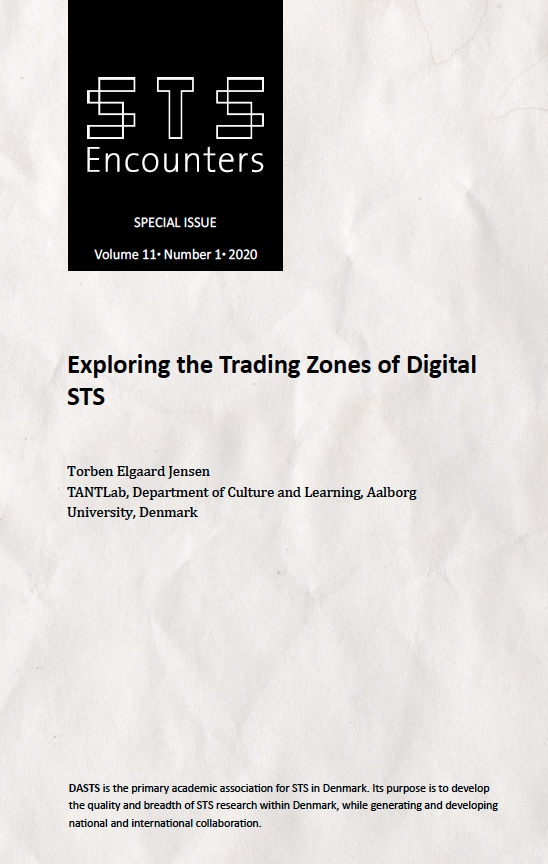Exploring the Trading Zones of Digital STS
DOI:
https://doi.org/10.7146/stse.v11i1.135276Keywords:
Trading zone, Digital STS, Digital methods, Actor-network theory, Modularity classAbstract
Over the last couple of decades, one of the significant developments in digital STS has been the rapid growth in digital methods and tools for data harvesting, analysis and visualisation. The increasing availability and deployment of digital tools raises questions about how to develop an analytic practice that reconciles the theoretical sensibilities of STS with tools and data that may sometimes be grounded in assumptions alien to STS. This article explores these challenges by reporting on two related digital STS projects that were carried out at the Techno- Anthropology Lab in Copenhagen. Drawing on science historian Peter Galison’s notion of trading zones, the article analyses how project participants from different communities of practice exchanged and combined tools, theories and projects in a variety of ways. The article identifies two particular trading strategies: the introduction of assisting ontologies or mini-theories, and the introduction of project-specific problems and success criteria. In the final discussion, the article argues that a reliance on these trading strategies in the future will require digital STS to maintain and cultivate its theoretical sensibilities through a continued dialogue with the broader field of STS, including, in particular, new interventionist forms of STS scholarship.

Downloads
Published
How to Cite
Issue
Section
License

This work is licensed under a Creative Commons Attribution-NonCommercial-ShareAlike 4.0 International License.
Starting with volume 15, articles published in STS Encounters are licensed under Attribution-NonCommercial-ShareAlike 4.0 International (CC BY-NC-SA 4.0). The editorial board may accept other Creative Commons licenses for individual articles, if required by funding bodies e.g. the European Research Council. Previous articles are not licensed under Creative Commons. In these volumes, all rights are reserved to the authors of the articles respectively.




